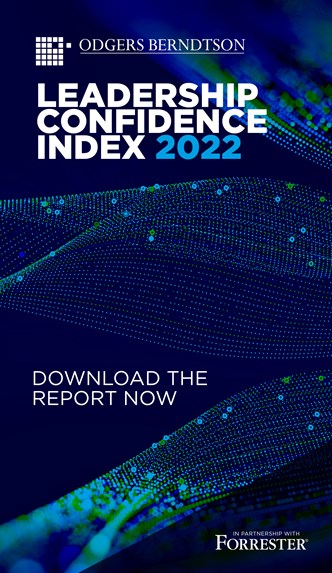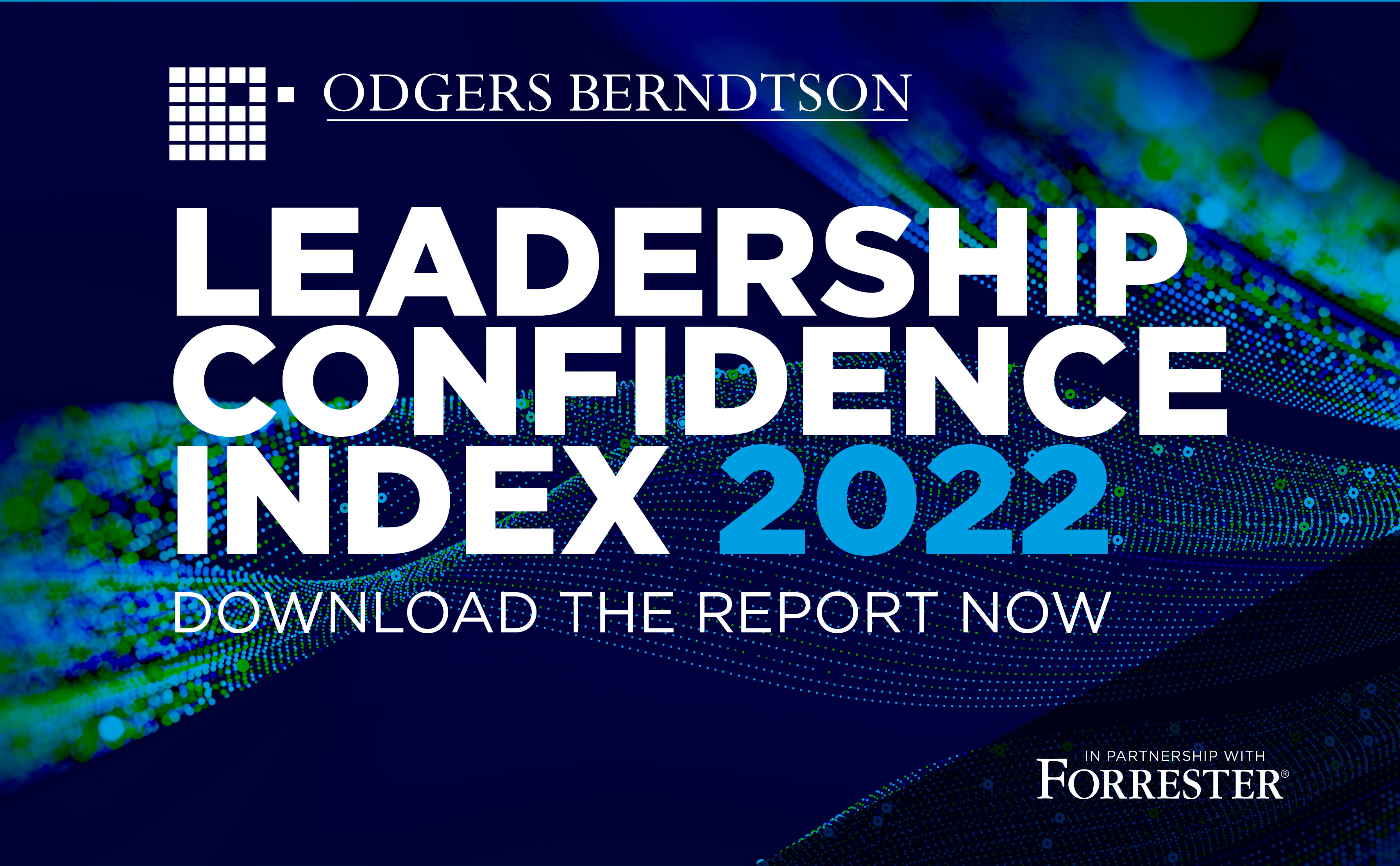Earlier this year Odgers Berndtson released its Leadership Confidence Index 2022. It found confidence in leadership had almost doubled in the past two years, jumping from 24% in 2020 to 42% in 2022.
It is a striking statistic, and from it, one thing can be deducted with certainty; around the world, more leaders than expected are performing better than they were before the pandemic. Yet the statistic tells another tale. More than half of leaders did not perform well and lost the confidence of their teams and organizations. These juxtaposing circumstances reveal much about the global state of leadership performance and leadership acquisition today.
How we arrived at these circumstances is clear. COVID-19 resulted in a crisis where business as usual no longer existed.
In the newly created environment, many leaders rose to the challenge, adapted to the new state-of-play, and realigned their organizations with skill and purpose.
Ultimately, the pandemic provided an environment in which the best leaders could show ‘what they were made of’ and their capabilities shone through. If there was single sentence summing up these types of individuals, it would be: leaders who people will follow, not because they have to but because they want to.
Yet 58% of leaders did not fall into this category. Unable or unwilling to adapt they stuck rigidly to the playbook of the past, applying outdated skills to a novel situation. Often, these were leaders more at home talking to their boards about share price and public opinion than having an honest conversation with those they led. Their capabilities centered around achieving market share and growth as opposed to managing disruption, or more importantly, inspiring teams to deliver results during disruption. Many didn’t know what hit them, and unable to swim in the current of the new world, have or are currently being replaced. It has resulted in a new cohort of leaders worldwide.
Watch: Leadership Confidence Index 2022 Webinar
A new leadership benchmark
This new breed of leader is organizationally facing. They understand that the board and their people are of equal importance. Their decision-making is often inclusive, they place trust in their senior executives and genuinely care about those they lead – not because it’s in vogue but because they genuinely value them.
These leaders often have a different thought process to their predecessors.
Their skills lie in reading market signals and adapting to them swiftly. They are strategists and change agents who can ‘see around corners'. They can extrapolate from major trends and take advantage of the findings, turning change into opportunity, and importantly inspiring others to deliver on that change. Behaviourally, they are more akin to an entrepreneur than a traditional manager; innovative, brave, humble, and naturally inquisitive with a desire to learn. Above all else, they embrace and even thrive on disruption.

Leadership Confidence Index 2022
Find out how confidence in global leadership changed over the last two years.
DOWNLOAD NOWA change in leadership acquisition
Such a dramatic change to the leadership paradigm has dramatic consequences. Globally, the number of leadership searches has increased exponentially. Across APAC the search industry has seen 43% growth, while the reshuffle of executives in South America has resulted in double the normal number of searches we would make for general managers in Chile, Peru, and Argentina. In the UK, and across the U.S., the story is the same – explosive demand for new leadership talent.
Much of this demand can be laid at the feet of the pandemic. 58% of leaders were not up to the challenge and therefore need replacing. But another, more significant factor is also at play here; the expectation of the disruption to come. Our own Index reveals the majority of executives (79%) believe the level of future disruption will either increase or maintain at the same pace.
And we know that the majority of boards feel the same way and want to future-proof their organizations against this disruption with the sort of leader who can manage and take advantage of it.
But the supply is scarce, and on top of this, regional conditions have upended the leadership acquisition market. Across counties in APAC, zero-tolerance lockdowns and stringent work permits have resulted in an exodus of strong talent. Combined with a limited local supply and deglobalization shifting the traditional leadership footprint to other countries in the region, the pool of high-performing leaders is now almost completely different.
In South America, tourism has been in freefall, the cost of many raw materials has exploded, and crop yields are expected to be lower while the price of fertilizer has shot up. Political instability and a withdrawal of significant investment has added to the disruption. Even countries like Chile that have become accustomed to relative stability now face uncertainty. For leaders, the economic environment has been rewritten. Many are retiring and more are being replaced.
In the U.S. and the UK, technology transformation – much like it is elsewhere in the world – is no longer just a sector but a function of every industry. It’s challenging everything from business models and back-office operations to the very products and services a company sells. For years, the notion that leaders should be tech-savvy has been gaining momentum. Now it’s an absolute necessity, with a core skill being the ability to know which technologies to invest in, and which ones not to.
Read: The Changing Landscape of Leadership: How to Lead the Way
And across every industry and country, supply chain chaos, rising inflation, and the ESG and diversity agendas are near-universal challenges for which it is a leader’s responsibility to resolve.
The current climate has become a catalyst for exponential demand and short supply. What makes a high-performing leader is very different to what it was before the pandemic. At the same time, the business environment has altered who those leaders are, where they come from, and the types of skillsets they have. On the one side boards expect more of their leaders and on the other, there is a shortage of leaders who can genuinely deliver on these new expectations.
Yet they are out there. To find them, it will often require an organization to ‘go outside their lane’ and look for leaders in adjacent or even completely different industries.
It will mean genuinely leaning into diversity and inclusion and searching for leaders who are nothing like what has come before.
And it will mean enabling individuals from the second layer of senior management and helping them to step up. Above all, it means disregarding the traditional blueprint of what a leader should be and embracing the new leadership paradigm.
To discuss the changing landscape of leadership and your own organisational needs, please do get in touch with us here or your local Odgers Berndtson contact.
Stay up to date: Sign up here to our newsletter and receive the latest news in leadership and top talent, industry insights and events directly to your inbox.



